It looks like you're using an Ad Blocker.
Please white-list or disable AboveTopSecret.com in your ad-blocking tool.
Thank you.
Some features of ATS will be disabled while you continue to use an ad-blocker.
share:
a reply to: Madrusa
Was aiming to make this post shorter and failed completely 🤷♂️
Those Arabic myths are interesting, bridging the older into the modern, picked up by Westerners and reblended with the Greek.
Signs of Hebrew sublimation of the Sun abound, from Elba, Ishara and the menorah, which relates to Scorpio, the 7 Demons, and to far darker rites.
I'd guess the Pillars of Gilgamesh and the Hall of Records in Sippar later became conflated with where Gilgamesh went, the twin peaks where Shamash/Utu passed from day to night as the gate of the Underworld, also Heaven and the immortal realm of the flood hero.
A sea shell often took the place of the cup as in this coin from Tyre, which appears along with the Pillars of Hercules and the Tree
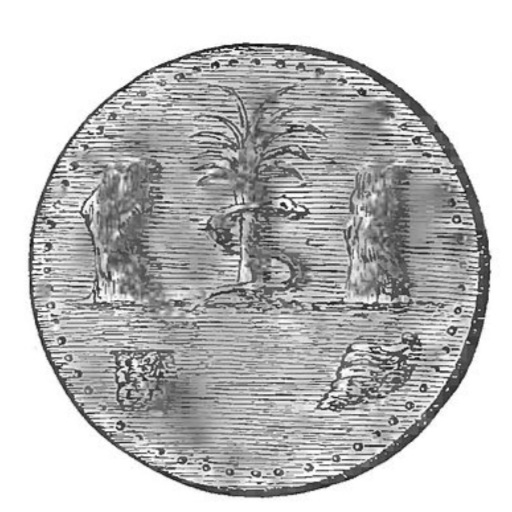
Celtic and Authurian myth has legends of Sun Gods or Sun Hero's getting bound to or being captured by mysterious Cups.
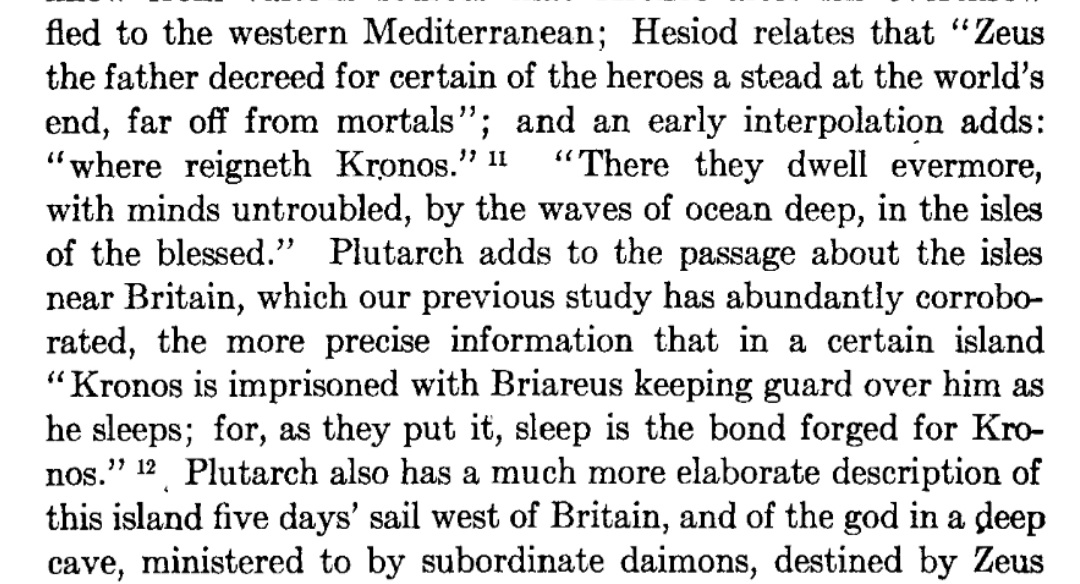
Plutach describes elsewhere that the people of the West consider winter to be Kronos, summer Aphrodite, and spring Persephone, so it's a seasonal description with Kronos in his Black Sun aspect, similar to Apollo going to Hyperborea in the winter, but with some added elements of the Hall of Records as mentioned earlier.
Here's where it goes into the twilight zone...
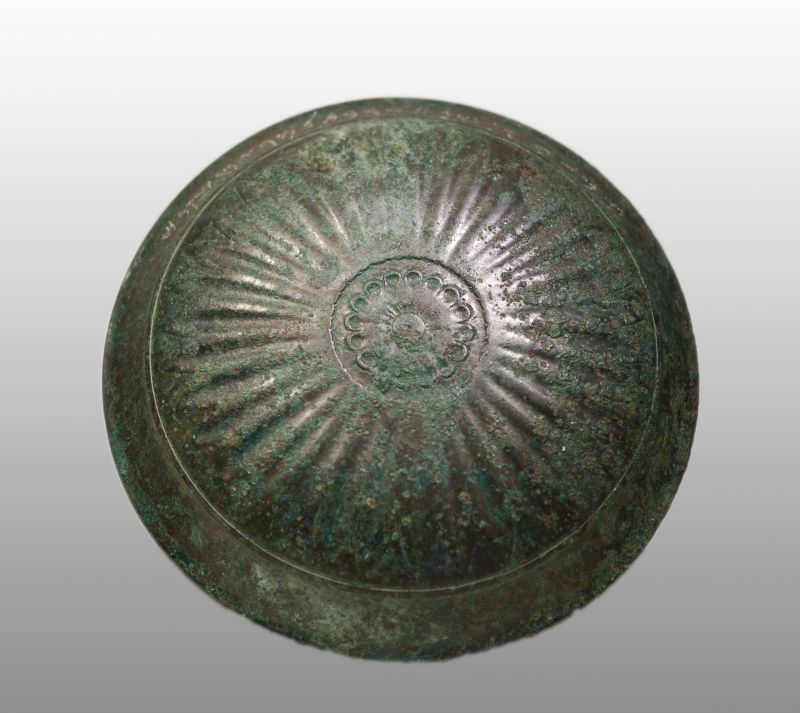
A number of Gods are mentioned in relation to the marzeah, the Phoenecian bowl perhaps from an earlier cultic festival of Shamash. In Ugaritic texts its mostly Baal/El and marzeah.
Seems the practice degraded over time and specifically with these adherents of the rite.
Baal Peor and the Marzeah Feast
This was a decent to the underworld, and in the Hebrew context, with the aim of raising something unholy.
Last Supper anyone?
Was aiming to make this post shorter and failed completely 🤷♂️
Those Arabic myths are interesting, bridging the older into the modern, picked up by Westerners and reblended with the Greek.
Signs of Hebrew sublimation of the Sun abound, from Elba, Ishara and the menorah, which relates to Scorpio, the 7 Demons, and to far darker rites.
A Hanukkah menorah, or hanukkiah, is a nine-branched candelabrum lit during the eight-day Jewish holiday of Hanukkah
The ninth branch holds a candle, called the shamash ("helper" or "servant"), which is used to light the other eight.
I'd guess the Pillars of Gilgamesh and the Hall of Records in Sippar later became conflated with where Gilgamesh went, the twin peaks where Shamash/Utu passed from day to night as the gate of the Underworld, also Heaven and the immortal realm of the flood hero.
Helios, (Greek: “Sun”) in Greek religion, the sun god, sometimes called a Titan. He drove a chariot daily from east to west across the sky and sailed around the northerly stream of Ocean each night in a huge cup.
A sea shell often took the place of the cup as in this coin from Tyre, which appears along with the Pillars of Hercules and the Tree

Celtic and Authurian myth has legends of Sun Gods or Sun Hero's getting bound to or being captured by mysterious Cups.

Plutach describes elsewhere that the people of the West consider winter to be Kronos, summer Aphrodite, and spring Persephone, so it's a seasonal description with Kronos in his Black Sun aspect, similar to Apollo going to Hyperborea in the winter, but with some added elements of the Hall of Records as mentioned earlier.
Here's where it goes into the twilight zone...
“2 cups we offer to the marzeah of Shamash,” inscription on a drinking bowl

A number of Gods are mentioned in relation to the marzeah, the Phoenecian bowl perhaps from an earlier cultic festival of Shamash. In Ugaritic texts its mostly Baal/El and marzeah.
Amos 6:7 sn Religious banquets. This refers to the מַרְזֵחַ (marzeakh), a type of pagan religious banquet popular among the upper class of Israel at this time and apparently associated with mourning
Seems the practice degraded over time and specifically with these adherents of the rite.
They joined themselves also unto Baal-peor, And ate the sacrifices of the dead. (Psa 106:28 ASV)
Baal Peor and the Marzeah Feast
This was a decent to the underworld, and in the Hebrew context, with the aim of raising something unholy.
In biblical time the spirits called upon were not so much the spirits of the newly deceased as spirits from a far and distant past. The rephaim are little spirits of fertility
Like other demons they are living in and moving through "the air" at which they arrive after a 3-day journey from the underworld. Like the cheres, little chaotic spirits coming to Athens to celebrate the spring festival of Anthesteria and drink of the new wine led by their Lord Dionysos, so the rephaim arrive from the realm of death led by Baal to eat and drink for 7 days.
The Liturgy of the sacrifices of darkness-"You are summoned oh rephaim of the underworld" . But apart from the rephaim also some past and present kings are summoned, and the king is invited to descend with Shapshu (the sun) to the underworld. During this (ritual?) descent to the realm of death 7 sacrifices are brought - and a bird (as sacrifice?). It is not possible to deny a strong connection between the often rather rich and lodge-like marzeah institutions in the West Semitic area and the cult of the rephaim invited to marzeah
Last Supper anyone?
edit on 17-4-2022 by primalfractal because: (no reason given)
a reply to: whereislogic
Thinking Judeo-Christianity isn't based on myths is ridiculous, the bible is however a dangerously subversive work of fiction.
Are you that guy?
Thinking Judeo-Christianity isn't based on myths is ridiculous, the bible is however a dangerously subversive work of fiction.
Steve Falkenberg, professor of religious psychology at Eastern Kentucky University, observed.
I've never met anyone who actually believes the Bible is literally true. I know a bunch of people who say they believe the Bible is literally true but nobody is actually a literalist. Taken literally, the Bible says the earth is flat and setting on pillars and cannot move (1 Chr 16:30, Ps 93:1, Ps 96:10, 1 Sam 2:8, Job 9:6). It says that great sea monsters are set to guard the edge of the sea (Job 41, Ps 104:26).
Are you that guy?
edit on 17-4-2022 by primalfractal because: (no reason given)
a reply to: primalfractal
According to John's parallel narrative of the last supper John 13, Jesus thought washing feet was more important than eating bread.
But in John 3 times 7 he claimed some of the apostles had a last fish meal with Jesus after the Romans were done with him.
John the baptist spent a lot of time in prison.
They paraded a wax figure of Julius Caesar complete with the 23 wounds after the assassination March 15th, 44 BC, that is what the crowds came to see. Jesus was crucified in April about 77 years later.
Last Supper anyone?
According to John's parallel narrative of the last supper John 13, Jesus thought washing feet was more important than eating bread.
But in John 3 times 7 he claimed some of the apostles had a last fish meal with Jesus after the Romans were done with him.
John the baptist spent a lot of time in prison.
They paraded a wax figure of Julius Caesar complete with the 23 wounds after the assassination March 15th, 44 BC, that is what the crowds came to see. Jesus was crucified in April about 77 years later.
a reply to: fromunclexcommunicate
I'm not familiar with the symbolism of feet washing, although likely there is some and inherited from older traditions, along with solving the problem of dirty feet.
The Marzeah was probably the basis of the last supper from the other Biblical account, the feast involved a sacred gathering of 12 people with a 13th representing the Sun King, symbolic numbers representing Divine archetypes. The Nabbatean version described as worship to Dushara, an equivalent of Yhwh.
As with a lot of things, the ritual could be used for good or evil, the Sun King decending to the underworld to rise again empowered, mirroring the natural process, or a decent to raise darkness from below and spread it upon the face of the Earth, unnatural, but some tend to make bad choices.
I'm not familiar with the symbolism of feet washing, although likely there is some and inherited from older traditions, along with solving the problem of dirty feet.
The Marzeah was probably the basis of the last supper from the other Biblical account, the feast involved a sacred gathering of 12 people with a 13th representing the Sun King, symbolic numbers representing Divine archetypes. The Nabbatean version described as worship to Dushara, an equivalent of Yhwh.
They – the Nabataeans – prepare common meals together in groups of thirteen persons; and they have two girl-singers for each banquet. The king holds many drinking bouts in magnificent style, but no one drinks more than eleven cupfuls, each time using a different golden cup. The king is so democratic that, in addition to serving himself, he sometimes even serves the rest himself in turn’
The marzea was a banquet and association whose participants were mostly among the high-rank officials, and was comprised mostly of males, as indicated by Strabo It was an association of a group who had a specific deity as its patron. Each marzeaÌ was led by a rb mrz Ì’ who was responsible for managing and organizing the meeting, which was held in special places designed for this purpose. Basically, each had its own patron deity, Bel in Palmyra and Dushara in Nabataea. The Nabataeans constructed rock-cut triclinia for these funerary and religious festivals and meetings. These dining and banqueting halls were constructed to celebrate the feast of the dead
As with a lot of things, the ritual could be used for good or evil, the Sun King decending to the underworld to rise again empowered, mirroring the natural process, or a decent to raise darkness from below and spread it upon the face of the Earth, unnatural, but some tend to make bad choices.
edit on 17-4-2022 by primalfractal because: (no reason given)
a reply to: primalfractal
There was a curious concept related to Adocentyn as the City of the Sun;
The symbol of the Apple tree and the association that had with forbidden knowledge and also choice in the case of Eris.
The naming of Sippar is Akkadian and related to the knowldege of the libraries.
But the Sumerian name of the City was Zim-bir taken as Bird City, which is interesting as it's companion City was Anunitum the sign of the Fish, together the Mesopotamian sign for Pisces, the bird of which could be related to the Flood mythos.
Utu was associated with birds in terms of the dawn chorus, but Sippar/Zim-bir could also be taken as the place of the Apple tree.

The Apple tree of Zim-bir land, were Hashur indicates Apple

The Appl e Symbolism of Sippar may relate to Aya as an aspect of Earth/Gaia as the consort of Utu, though a Golden Apple can naturally be taken as a symbol of the Sun itself. Also Aya is the Semitic Feminine determinative as per Sumerian NUN/Eresh/Eris.
The Apple symbol also relates to the concept of eternal youth and beauty again as related to Aya/Serida in Mesopotmain mythology.
There was a curious concept related to Adocentyn as the City of the Sun;
And in this place he planted trees, in the middle of which he set up a great tree which bore fruits of every type. At the summit of this fortress he had a certain tower built, which attained the height of thirty cubits, on whose summit he ordained a round apple, whose color changed every day over a period of seven days. At the end of the seven days, it returned to the color it first had. Every day, this apple covered the entire city in the color, and thus the city was resplendent each day with that day’s color
The symbol of the Apple tree and the association that had with forbidden knowledge and also choice in the case of Eris.
The naming of Sippar is Akkadian and related to the knowldege of the libraries.
The root ספר (spr) has to do with information technology: the efficient storage, retrieval and sharing of data. Long before fiction and recreational reading was a thing, record keeping was mostly a mathematical and economic enterprise
Noun ספר (seper) denotes any kind of record, historical records, legal documents, prophetic messages, and so on. Noun ספרה (sipra) means book or a bundled collection of records. Denominative verb ספר (sapar) means to write or produce a ספר (seper): to carefully observe, to recount, to record
But the Sumerian name of the City was Zim-bir taken as Bird City, which is interesting as it's companion City was Anunitum the sign of the Fish, together the Mesopotamian sign for Pisces, the bird of which could be related to the Flood mythos.
O Zimbir, dais upon which Utu sits daily, E-nun-ana (House of the prince of heaven), star of heaven, crown given birth by Ningal, house of Utu, your prince, the …… of the universe, fills heaven and earth.
Utu was associated with birds in terms of the dawn chorus, but Sippar/Zim-bir could also be taken as the place of the Apple tree.

The Apple tree of Zim-bir land, were Hashur indicates Apple

The Appl e Symbolism of Sippar may relate to Aya as an aspect of Earth/Gaia as the consort of Utu, though a Golden Apple can naturally be taken as a symbol of the Sun itself. Also Aya is the Semitic Feminine determinative as per Sumerian NUN/Eresh/Eris.
The Garden of the Hesperides is Hera's orchard in the west, where either a single apple plant or a grove grows, producing golden apples. According to legend, when the marriage of Zeus and Hera took place, the different deities came with nuptial presents for the latter, and among them Gaia, with branches bearing golden apples upon them as a wedding gift.
The Greek hero Heracles, as a part of his Twelve Labours, was required to travel to the Garden of the Hesperides and pick the golden apples off the Tree of Life growing at its center
The Apple symbol also relates to the concept of eternal youth and beauty again as related to Aya/Serida in Mesopotmain mythology.
In Norse mythology, Iðunn, the goddess of eternal youth, is the keeper of an eski (a wooden box made of ash wood and often used for carrying personal possessions) full of apples eaten by the gods when they begin to grow old, rendering them young again.
a reply to: primalfractal
I'm not familiar with the symbolism of feet washing, although likely there is some and inherited from older traditions, along with solving the problem of dirty feet.
John the Baptist had a following that included some allegorically challenged mathematicians.
So when the scripture states he took off his Sunday best laid them aside and put on a towel, that is probably supposed to be the cue he is moving away from the superficial to something with some depth.
Maybe simple math for example on the one hand you have five fingers and 5 times 73 is 365.
Time flies like an arrow but if you are doing the math for GPS its 5 times 72 or 360 on the other hand.
They both use minutes and seconds but for GPS 60 minutes time 60 seconds is seconds in a degree of latitude.
They plant wheat for bread in the spring near the equinox so if that is not to be used I guess we are supposed to use the solstice limits of the sin wave.
You can graph the suns motion between the Tropic of cancer about 23.5 degrees north of the equator and the tropic of Capricorn about 23.5 degrees south of the equator. If you drop a leg at the summer solstice and another leg at the winter solstice it is about 47 degrees of travel depending on the century of observation.
Now of course feet with 5 toes are on the end of a leg.
Five times 47 is the number of months for the Metonic cycle ~19 years described by Homer legend ~700 years BC.
This was also engineered into the Antikythera device gearing around the start of the Julian calendar so must have been well known to insiders.
The antikythara device would have been the classified supercomputer of the day that leaves you wondering what else they had back then.
Some of those old timers thought nothing of fishing naked because there was nobody really watching and besides it was their Garden of Eden.
Folie à deux is no longer considered a mental illness in the DSM-5 Psychotic Disorder guidelines.
a reply to: Madrusa
Thought this sounded a bit like Adocentyn, about the Hittite Sun Goddess of Arinna "Queen of all the Lands".
Goddess Aya as the keeper of knowledge then, the feminine establishment of an ascent of the Tree, rather than a fall as mentioned in the Bible. Other path is the internal method, with a jump through the dark instead of a bridge, leaving a disconnect and no desire to act, head in the clouds but no feet on the ground.
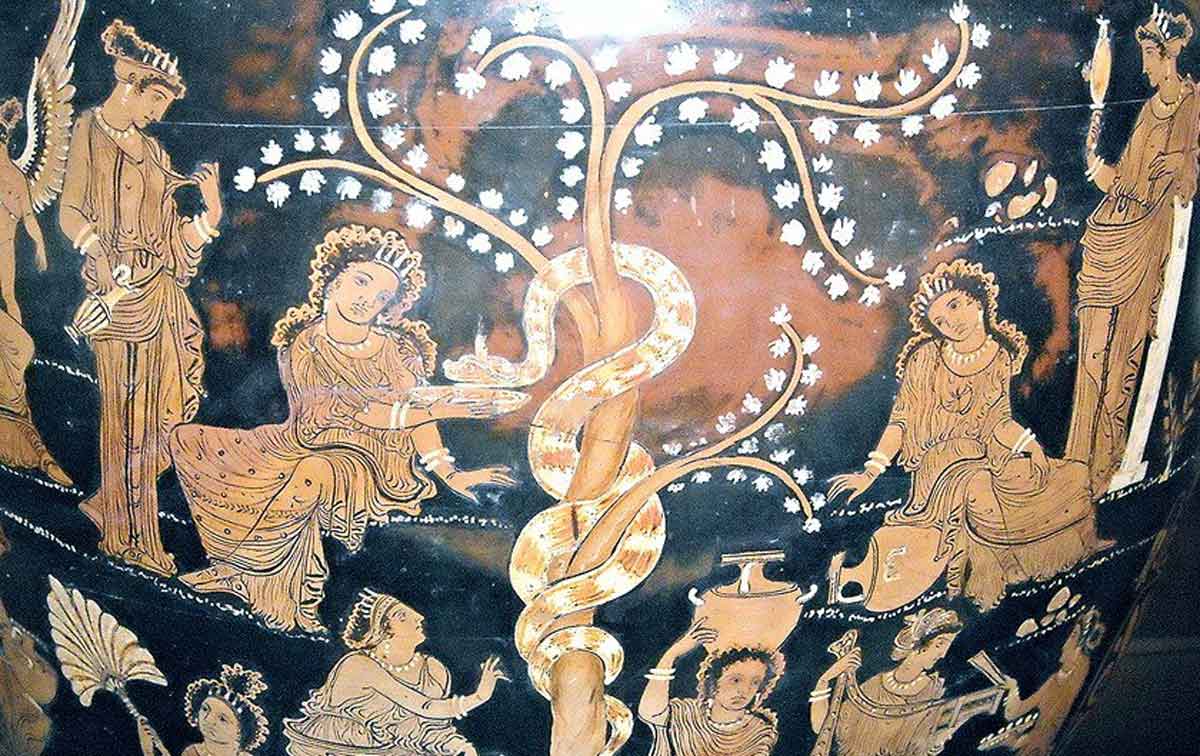
Males are just gardeners in this regard.
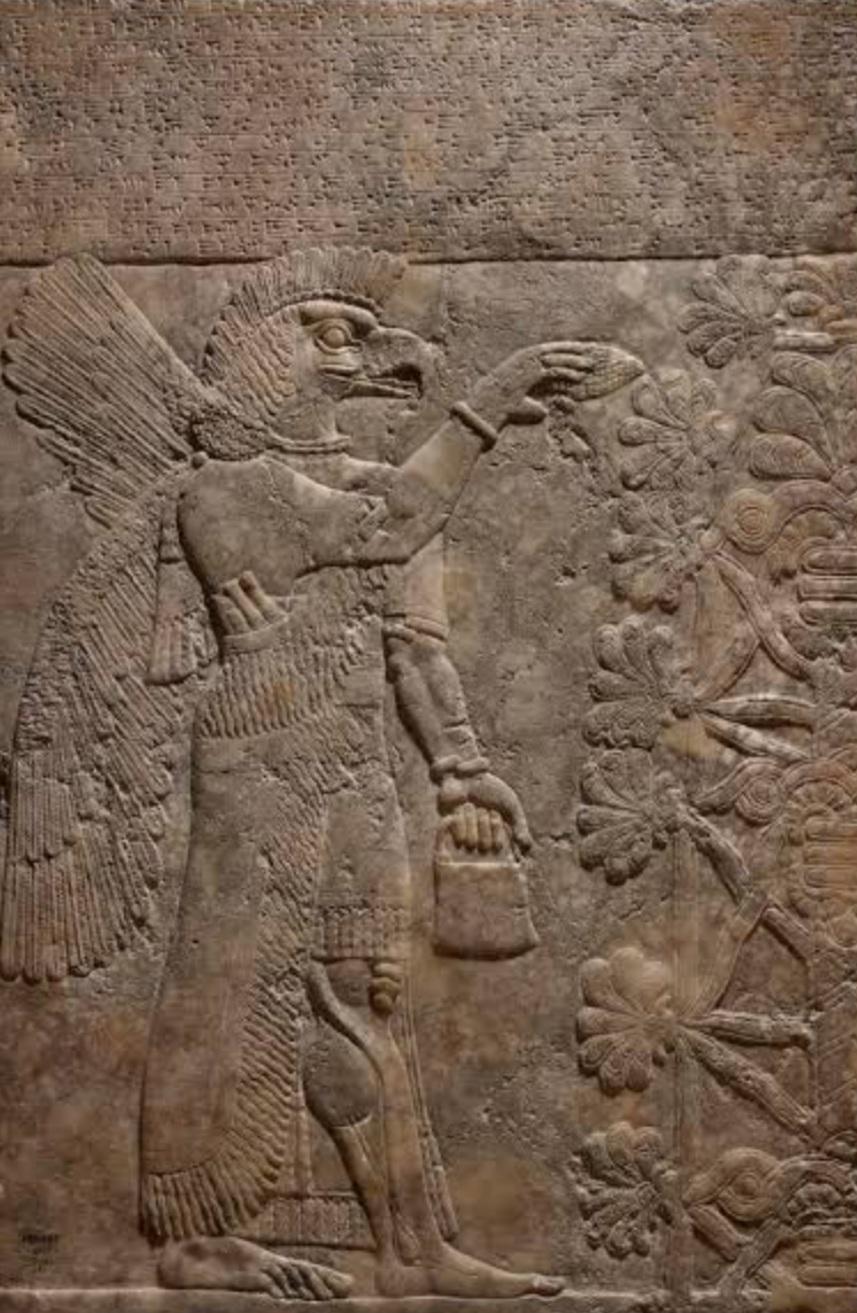
The Divine Grace that opens the path to knowledge comes from Shakti, the Goddess. Shaktipat or Śaktipāta (Sanskrit, from shakti "(psychic) energy" and pāta, "to fall").
Thought this sounded a bit like Adocentyn, about the Hittite Sun Goddess of Arinna "Queen of all the Lands".
An apple tree stands at a well and is covered all over with a blood-red colour. The Sun goddess of Arinna saw (it) and she decorated (it) with her shining wand.
Goddess Aya as the keeper of knowledge then, the feminine establishment of an ascent of the Tree, rather than a fall as mentioned in the Bible. Other path is the internal method, with a jump through the dark instead of a bridge, leaving a disconnect and no desire to act, head in the clouds but no feet on the ground.

There was a garden of the gods: all round him stood bushes bearing gems ... fruit of carnelian with the vine hanging from it, beautiful to look at; lapis lazuli leaves hung thick with fruit, sweet to see ... rare stones, agate and pearls from out the sea.
Males are just gardeners in this regard.

The Divine Grace that opens the path to knowledge comes from Shakti, the Goddess. Shaktipat or Śaktipāta (Sanskrit, from shakti "(psychic) energy" and pāta, "to fall").
edit on 18-4-2022 by primalfractal because: (no reason given)
a reply to: fromunclexcommunicate
The Antikythera mechanism is amazing, indeed that such a thing existed at that time sure does make you wonder what else was around. Cicero described something similar.
So is it possible there was a steampunk styled secret island with robot servants and singing mechanical birds... well there is some talk.
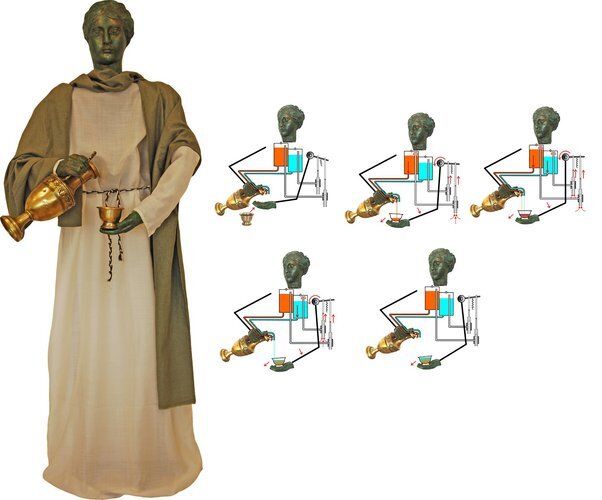
Ancient Greek Technology
The Antikythera mechanism is amazing, indeed that such a thing existed at that time sure does make you wonder what else was around. Cicero described something similar.
But what appeared very admirable in this invention of Archimedes was, that he had discovered a method of producing the unequal and various courses, with their dissimilar velocities, by one revolution. When Gallus put this sphere in motion, the moon was made to succeed the sun by as many revolutions of the brass circle, as it actually took days to do in the heavens. From which the same setting of the sun was produced on the sphere as in the heavens: and the moon fell on the very point, where it met the shadow of the earth, when the sun from the region…
So is it possible there was a steampunk styled secret island with robot servants and singing mechanical birds... well there is some talk.
In Greek mythology, Talos was a
giant automaton made of bronze to protect Europa in Crete from pirates and invaders. He circled the island's shores three times daily.

Ancient Greek Technology
edit on 18-4-2022 by primalfractal because: (no reason
given)
a reply to: primalfractal
Anatolia and the Sun Goddess of Arinna is likely the origin of the relationship of that aspect of the Earth Goddess, Arinna relating to roots. It's curious that the Sumerian for fruit tree is Sip-pi-ru-u;

That is the root of the word that indicates in Semitic Akkadian/Hebrew an archive of knowledge is relating to the fruit tree in Sumerian, and that relationship is commonly found in myth, with Eris the Apple relates to choice and potential discord but even that can be informed by knowledge, the knowing of what to choose and what to reject.
Idealized Cities of truth and light are generally given to contain fruit trees as a symbol for knowledge in various forms and it's also the case that many of those are based on the Pegasus square between the arc of Pisces, the Temple complex of Sippar.
It's interesting that in Christianity the Golden Apple is the symbol of redemption;
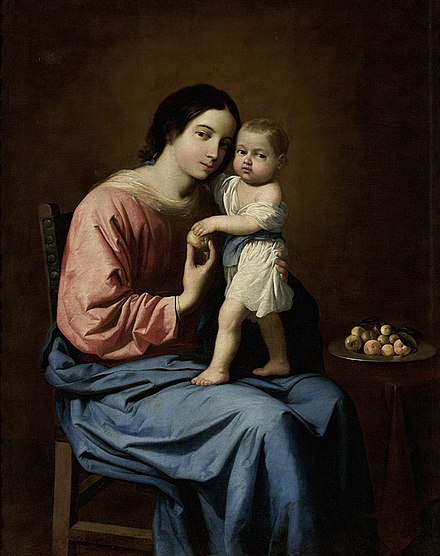
The underlying Classical basis of Christianity something at odds with the Jewish tradition there, but it would have been difficult to maintain that knowledge itself was evil in Western culture thus they appropriated the symbol.
There was some relationship between Dumuzi and Utu in terms of shared shrines and Dumuzi is connected to the Apple tree of Kulaba, the religious district of Uruk, though sometimes the Masculine role is that of the Gardener, which is what Mary Magdalene took Jesus for in the Garden of Gethsemene, but Dumuzi as a God of vegetation ultimately derives from the relationship of the Earth to the Sun, this would also make highly dependent on water.
Dumuzi can only be taken as the external Masculine manifestation of the Apple tree, whereas the Feminine related to the internalized and the roots, though Inanna emerged from the Underworld by despatching Dumuzid into it, perhaps related to the setting Sun and Venus as Evening star.

The cultic site of Kulaba was related to the E-Babbar Temple of Uruk, likely in the same sense that the Apple tree of Sippar was related to the E-babbar dedicated to Utu.
Anatolia and the Sun Goddess of Arinna is likely the origin of the relationship of that aspect of the Earth Goddess, Arinna relating to roots. It's curious that the Sumerian for fruit tree is Sip-pi-ru-u;

That is the root of the word that indicates in Semitic Akkadian/Hebrew an archive of knowledge is relating to the fruit tree in Sumerian, and that relationship is commonly found in myth, with Eris the Apple relates to choice and potential discord but even that can be informed by knowledge, the knowing of what to choose and what to reject.
Idealized Cities of truth and light are generally given to contain fruit trees as a symbol for knowledge in various forms and it's also the case that many of those are based on the Pegasus square between the arc of Pisces, the Temple complex of Sippar.
It's interesting that in Christianity the Golden Apple is the symbol of redemption;

In the Old Testament, the apple was significant of the fall of man; in the New Testament, it is an emblem of the redemption from that fall. The apple is represented in pictures of the Madonna and Infant Jesus as another sign of that redemption.
The unnamed fruit of Eden thus became an apple under the influence of the story of the golden apples in the Garden of Hesperides. As a result, the apple became a symbol for knowledge, immortality, temptation, the fall of man and sin.
The underlying Classical basis of Christianity something at odds with the Jewish tradition there, but it would have been difficult to maintain that knowledge itself was evil in Western culture thus they appropriated the symbol.
The custom of planting miniature gardens with fast-growing plants such as lettuce and fennel, which would then be placed out in the hot sun to sprout before withering in the heat, was a well-attested custom in ancient Greece associated with the festival of Adonia in honor of Adonis, the Greek version of Tammuz
There was some relationship between Dumuzi and Utu in terms of shared shrines and Dumuzi is connected to the Apple tree of Kulaba, the religious district of Uruk, though sometimes the Masculine role is that of the Gardener, which is what Mary Magdalene took Jesus for in the Garden of Gethsemene, but Dumuzi as a God of vegetation ultimately derives from the relationship of the Earth to the Sun, this would also make highly dependent on water.
My desirable one, my desirable one, your charms are lovely, my desirable apple garden, your charms are lovely. My fruitful garden of mes trees, your charms are lovely, my one who is in himself Dumuzid-abzu, your charms are lovely
My brother, Dumuzi, brought me into his garden.I strolled with him among the standing trees, I stood with him among the fallen trees. By the apple tree I knelt as is proper.
My brother-bearer, your allure was sweet. My blossom-bearer in the apple orchard, My bearer of fruit in the apple orchard,Dumuzi-abzu, your allure was sweet.
Dumuzi can only be taken as the external Masculine manifestation of the Apple tree, whereas the Feminine related to the internalized and the roots, though Inanna emerged from the Underworld by despatching Dumuzid into it, perhaps related to the setting Sun and Venus as Evening star.
They followed her to the great APPLE TREE in the plain of Kulaba. There was Dumuzid clothed in a magnificent garment and seated magnificently on a throne. The demons seized him there by his thighs. The seven of them poured the milk from his churns.

The cultic site of Kulaba was related to the E-Babbar Temple of Uruk, likely in the same sense that the Apple tree of Sippar was related to the E-babbar dedicated to Utu.
edit on 18-4-2022 by Madrusa because: (no reason given)
a reply to: Madrusa
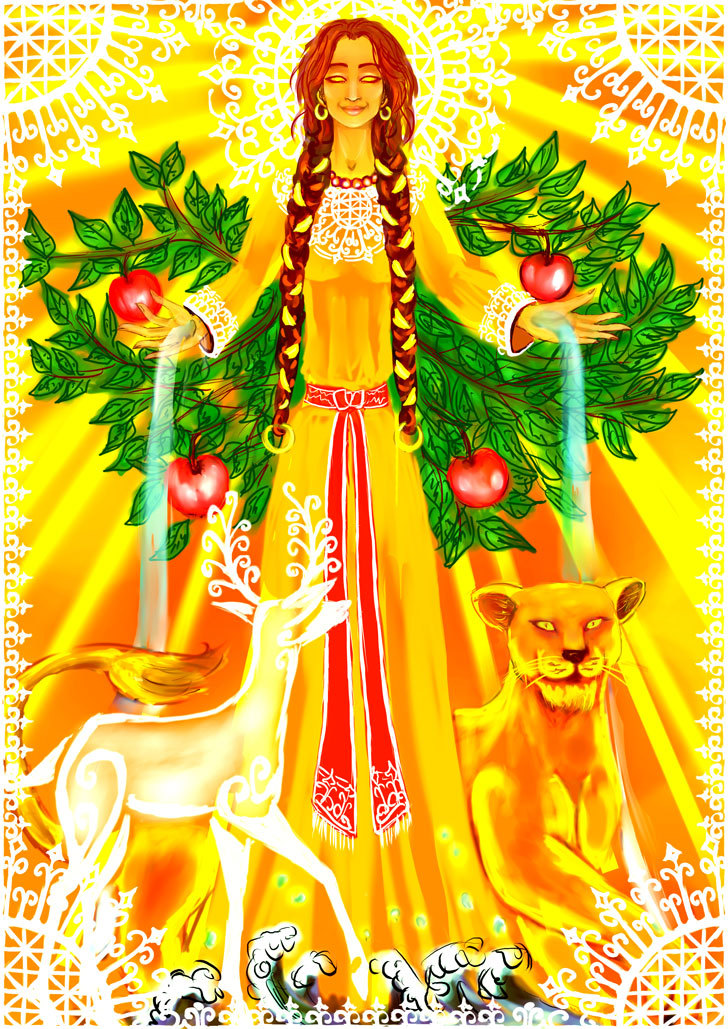
The apple associated with youth or longevity comes up in the aphorism "an apple a day keeps the doctor away", and knowledge with the red apple left for a good teacher, rare these days, schools being a bastion of liberalism.
Then there's also the funny meme...

Really only around 3% of people can't picture anything at all, but I'm not quite sure where the cut off point is 🤪 It was posted on twitter, some of the responses are good.
Malus Sieversii - wild apple that grows in Kazakhstan, an ancestor of the modern apple 🍎


I like her reconstructed headpiece, it's cool, the slices found were similar sized to the wild apple of today.

Thou Sun Goddess of Arinna art an honored deity;
Thy name is held high among names;
Thy divinity is held high among the deities;
Nay, among the deities, Thou alone O Sun Goddess art honored;
Great art Thou alone O Sun Goddess of Arinna;
Nay compared to Thee no other deity is as honored or great …
The apple associated with youth or longevity comes up in the aphorism "an apple a day keeps the doctor away", and knowledge with the red apple left for a good teacher, rare these days, schools being a bastion of liberalism.
Then there's also the funny meme...

Really only around 3% of people can't picture anything at all, but I'm not quite sure where the cut off point is 🤪 It was posted on twitter, some of the responses are good.
Nope and I just found out today it's abnormal lol. I always thought the idea of "picturing" things was a metaphor lmao
Conjuring images from the ether like sorcerers
I’m a 5; I literally just repeat the word apple in my head and play along lmaooo
I keep seeing a red bell pepper
Malus Sieversii - wild apple that grows in Kazakhstan, an ancestor of the modern apple 🍎

Puabi was an Sumerian Queen buried at the city of Ur ca. 2500 BC. Puabi was buried with several servants where the females had headgear with 3 stylized flowers and nekles with leaves.
The leaves look like apple leaves, and the flowers could be stylized apple flowers.
In the tomb of Puabi was found slices of apples and and among the jewelry small apples in gold.

I like her reconstructed headpiece, it's cool, the slices found were similar sized to the wild apple of today.
edit on 19-4-2022 by
primalfractal because: (no reason given)
a reply to: primalfractal
I missed this the first time I read it due to being sexist.
Probably is key for the three wise men story in the bible though.
And look at the prison disinfo they are still publishing.
www.space.com...
I think NASA dates this to about the Lion air 610 event in 2018 so its been recorded.
Puabi was an Sumerian Queen buried at the city of Ur ca. 2500 BC. Puabi was buried with several servants where the females had headgear with 3 stylized flowers and nekles with leaves.
I missed this the first time I read it due to being sexist.
Probably is key for the three wise men story in the bible though.
And look at the prison disinfo they are still publishing.
www.space.com...
I think NASA dates this to about the Lion air 610 event in 2018 so its been recorded.
a reply to: primalfractal
Yes very nice goldwork and the early evidence of the Golden Apple relating to an afterlife cult of immortality
Hymn to Inanna
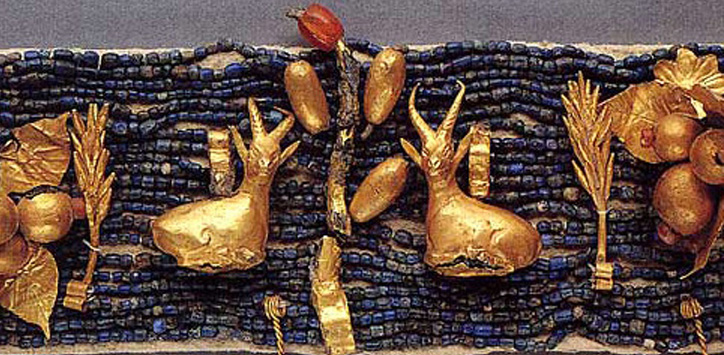
The translation of the symbolism into the Western extremeties is as per the journey of the Sun, the setting of that in order to rise again, there is also the poison version.
Yes very nice goldwork and the early evidence of the Golden Apple relating to an afterlife cult of immortality
You are she who displays shining cornelian from the mountains to be admired. Bringing shining lapis lazuli from the bright mountain in special baskets (?), you are she who, like fire, melts (?) gold from Harali. You are she who creates apples in their clusters (?). You are she who demands ....... You are she who creates the date spadices in their beauty.
Hymn to Inanna

The translation of the symbolism into the Western extremeties is as per the journey of the Sun, the setting of that in order to rise again, there is also the poison version.
edit on 19-4-2022 by Madrusa because: (no reason given)
a reply to: Madrusa
It's interesting what we have left of the apple myth today in the West is ambiguous, it's still considered a symbol of love and some would remember Aphrodite, but most searches on the term bring up the poisonous bitten version as founded by Steve Jobs, and Biblical Eve. The poison apple an inversion along the same lines as modern moral values or even what passes as religion, of course it's all connected.
On the Sethian Kabbalic Tree, where you think you're going up but are actually going down, Malkhut is often said to be the only sefirah that's easy to access due to its proximity to the material world, its said to be the lowest one.
Clearly upside down as the Crown/Sahasrara and the Garden of Immortals is at the top. Reminds me of the apple myth I heard as a child in the US.
Mostly a hoax they say, perhaps a sign of the times, but the idea caught on at least symbolically.
To me it seems like people are going to have to choke on those poison apples until they've had enough of the Sethian nonsense, they are cleared from the land like the vermin they are, and the Tree re-established from seed, then the Goddess might find us worthy of knowledge to rise again as civilization Golden.

It's interesting what we have left of the apple myth today in the West is ambiguous, it's still considered a symbol of love and some would remember Aphrodite, but most searches on the term bring up the poisonous bitten version as founded by Steve Jobs, and Biblical Eve. The poison apple an inversion along the same lines as modern moral values or even what passes as religion, of course it's all connected.
On the Sethian Kabbalic Tree, where you think you're going up but are actually going down, Malkhut is often said to be the only sefirah that's easy to access due to its proximity to the material world, its said to be the lowest one.
Malkhut means something like kingship or kingdom, sovereignty.
Malkhut is deeply associated with the Shekhinah, the immanent indwelling divine Presence of God which is understood as feminine. Jewish tradition has attached all sorts of symbolism to malkhut and Shekhinah -- there's a partial list of associations, among them the matriarch Rachel, the wellspring, the bride, the apple orchard, the garden of Eden, and Shabbat
Clearly upside down as the Crown/Sahasrara and the Garden of Immortals is at the top. Reminds me of the apple myth I heard as a child in the US.
In recent years, there have been reports of people with twisted minds putting razor blades and poison in taffy apples and Halloween candy. It is no longer safe to let your child eat treats that come from strangers. –Ann Landers in 1995
Mostly a hoax they say, perhaps a sign of the times, but the idea caught on at least symbolically.
These black Poison candy/ toffee apples are the ultimate wickedly sinister Halloween treat and will make an excellent centerpiece.
To me it seems like people are going to have to choke on those poison apples until they've had enough of the Sethian nonsense, they are cleared from the land like the vermin they are, and the Tree re-established from seed, then the Goddess might find us worthy of knowledge to rise again as civilization Golden.

edit on 20-4-2022 by primalfractal because: (no reason given)
a reply to: primalfractal
There's a Warhammer version of this archetype, Alarielle the Everqueen of Avelorn, which is located on Ulthuan their version of Atlantis, in later versions she gets to ride on a giant Beetle.
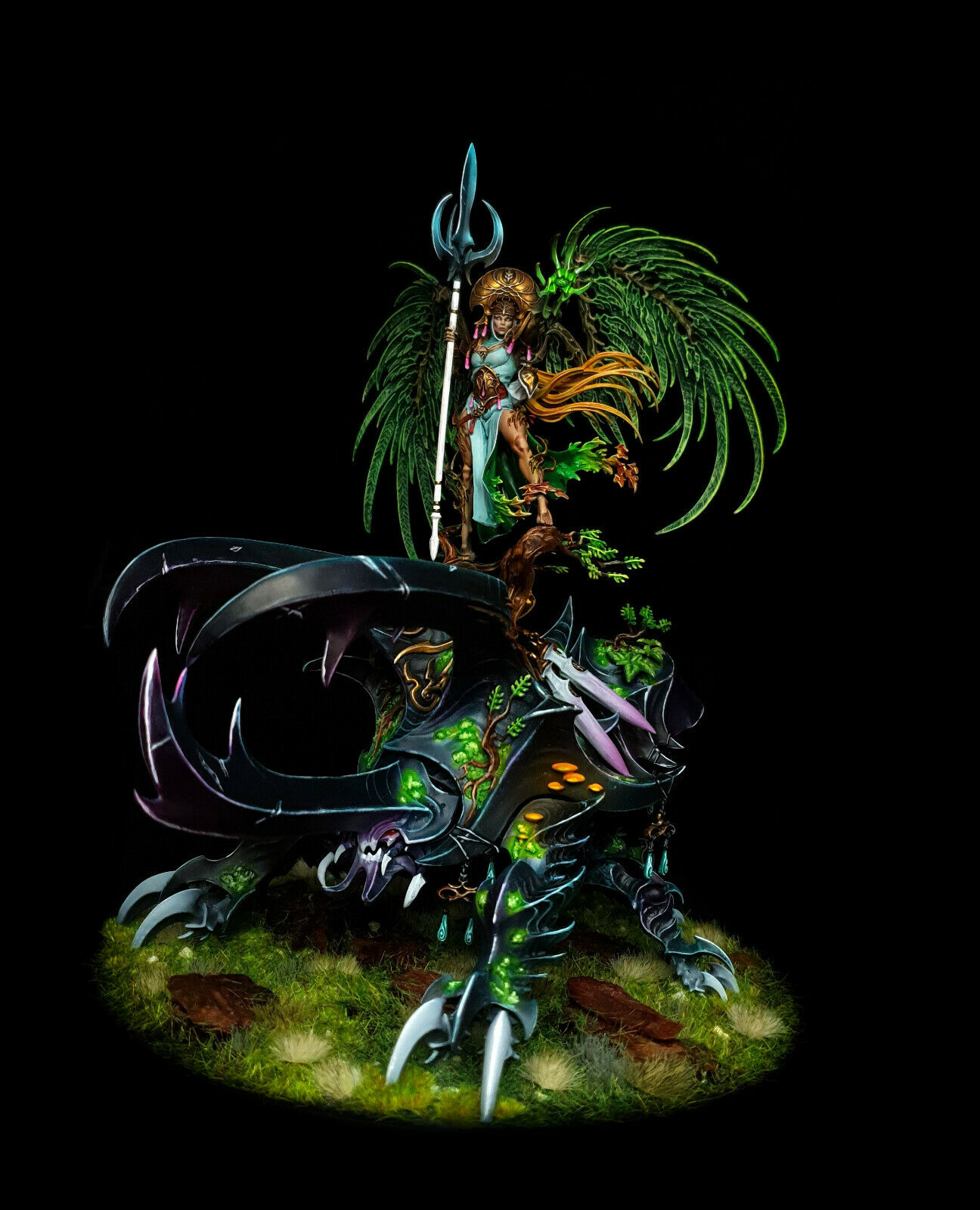
I want to watch Sargon debunk a video claiming Alarielle is actually the ultimate evil.
There's a Warhammer version of this archetype, Alarielle the Everqueen of Avelorn, which is located on Ulthuan their version of Atlantis, in later versions she gets to ride on a giant Beetle.

I want to watch Sargon debunk a video claiming Alarielle is actually the ultimate evil.
a reply to: Madrusa
Weapon of a beetle, the secret brotherhood of Tzeentch's nightmare.
The video of Alarielle the Everqueen had me thinking of the Flower Maiden Blodeuwedd, Ninefold Goddess of the Western Isles of Paradise.
Sure he'd do a good job judging by the treatment he gave the Chaos Gods, could quite easily just substitute a Christian Mystery Babylon version, but that would be too cringe to even watch.
Weapon of a beetle, the secret brotherhood of Tzeentch's nightmare.
The video of Alarielle the Everqueen had me thinking of the Flower Maiden Blodeuwedd, Ninefold Goddess of the Western Isles of Paradise.
[take] the flowers of the oak, and the flowers of the broom, and the flowers of the meadowsweet, and from those they conjured up the fairest and most beautiful maiden anyone had ever seen. And they baptized her in the way that they did at that time, and named her Blodeuwedd.
Sure he'd do a good job judging by the treatment he gave the Chaos Gods, could quite easily just substitute a Christian Mystery Babylon version, but that would be too cringe to even watch.
edit on 21-4-2022 by primalfractal because: (no reason given)
originally posted by: Harte
originally posted by: Madrusa
Hellanicus of Lesbos had written of Atlantis before Plato, so there were earlier Greek sources and tradition for him to use.
Hellanikos wrote not a single word about any place called "Atlantis."
The word "atlantis" is a Greek word - attributing something to Atlas. It has been translated variously as "Atlas'," "of Atlas," and "belonging to Atlas."
The Sea of Atlas is the Atlantis (of Atlas) Sea - which later was called an ocean - and transliterated into "Atlantic."
Hellanikos' text is a book about the family "of Atlas" - the Titan Atlas. His descendants, etc.
Harte
The Berbers had a guy named "Anti" in their mythology, which the greeks later called Antaeus. Similar in some sense to Atlas. And probably incorporated into Greek stories after they conquered Libya.
en.wikipedia.org...
They believed he had been a giant. And king of a nation with a name similar to Atlantis.
And the guy who was in charge of the City Solon is said to have gotten his story from was, as near as I can tell, a Libyan Prince. So it might not be truly Egyptian in origin, but rather Libyan/Berber.
That's the trouble with gossip chains. Solon hears it from a guy in a town in Egypt. His descendant hears it from him, who then tells it to Plato. And then Plato writes it for us, and we just hope the text has survived to the present unaltered.
originally posted by: bloodymarvelous
originally posted by: Harte
originally posted by: Madrusa
Hellanicus of Lesbos had written of Atlantis before Plato, so there were earlier Greek sources and tradition for him to use.
Hellanikos wrote not a single word about any place called "Atlantis."
The word "atlantis" is a Greek word - attributing something to Atlas. It has been translated variously as "Atlas'," "of Atlas," and "belonging to Atlas."
The Sea of Atlas is the Atlantis (of Atlas) Sea - which later was called an ocean - and transliterated into "Atlantic."
Hellanikos' text is a book about the family "of Atlas" - the Titan Atlas. His descendants, etc.
Harte
The Berbers had a guy named "Anti" in their mythology, which the greeks later called Antaeus. Similar in some sense to Atlas. And probably incorporated into Greek stories after they conquered Libya.
en.wikipedia.org...
They believed he had been a giant. And king of a nation with a name similar to Atlantis.
And the guy who was in charge of the City Solon is said to have gotten his story from was, as near as I can tell, a Libyan Prince. So it might not be truly Egyptian in origin, but rather Libyan/Berber.
That's the trouble with gossip chains. Solon hears it from a guy in a town in Egypt. His descendant hears it from him, who then tells it to Plato. And then Plato writes it for us, and we just hope the text has survived to the present unaltered.
They have a mythological king named Atlas, which was the Titan Atlas himself - obviously appropriated from the Greeks.
The Titan Atlas has nothing to do with Atlantis, which was named for the first king of Atlantis, a demigod named Atlas who was the son of Poseidon, not related to the Titan.
Harte
a reply to: bloodymarvelous
That's interesting because Antaeus is considered to relate to the Egyptian Ferryman Nemty, the resolution of the conflict between Horus and Seth takes place on an island related to Antaeus.
Nemty
The role of the Ferryman and Ta-Anty could be similar to that seen in the Gilgamesh epic.
Antiwy
The Place of the Judgement of the Gods then was the Island in the Middle, it is not specified the middle of what, some take it as the middle of the Nile but it could equally be the middle of the Atlantic Ocean.
Conten dings of Horus and Seth
That's interesting because Antaeus is considered to relate to the Egyptian Ferryman Nemty, the resolution of the conflict between Horus and Seth takes place on an island related to Antaeus.
Nemty features as a ferryman in an episode of the Conflict of Horus and Seth. Seth demands that Isis be excluded from the place where the judgment between Horus and himself is to be rendered. Re orders the judgment to take place on an island (possibly the same island in the midst of the Nile Hellanicus of Lesbos calls ‘Tindion’, which Philippe Derchain reads as a corruption of the Egyptian name Ta-Anty, ‘Place of Anty’, in turn possibly the same place Diodorus of Sicily calls ‘Antaeum’ (Diodorus I, 21)) and directs Nemty not to ferry Isis across. Isis changes her appearance, however, to that of an old woman carrying a bowl of flour which she claims she must deliver to a boy tending cattle on the island. Nemty resists, and Isis offers him at first a cake (wekhat, cp. wekhau, ‘talons’ in PT utterance 302), and then her gold signet ring, which he accepts and ferries her across
Nemty
The role of the Ferryman and Ta-Anty could be similar to that seen in the Gilgamesh epic.
Sometimes Antiwy, in accord with the “two” in his name, is taken to be a combined form of Horus and Seth, as though expressing the bond created by their very conflict. Diodorus Siculus (I, 21) locates the struggle between Horus and Seth as taking place “near the village now known as Antaios”. Te Velde (68f) sees Antiwy as “giving form to the coincidentia oppositorum” of Horus and Seth, and indeed, the capital of the 10th Upper Egyptian nome is given the ceremonial name at Denderah of ḥwt-śḥtp, “house of reconciliation”. Antiwy is on the whole more closely identified with Seth, however, and sometimes is straightforwardly identified with him and depicted with the head of the Seth-animal (Gardiner, II. 53-55). Antiwy also often has Nephthys for consort. Due to the similar sound of their names, Greeks sometimes identified Antaios with Antaios (or Antaeus), the Libyan giant and son of Poseidon defeated by Herakles—as apparently Diodorus, who says that the town of Antaios “derives its name from that of Antaios, a contemporary of Osiris, who was punished by Herakles”
Antiwy
The Place of the Judgement of the Gods then was the Island in the Middle, it is not specified the middle of what, some take it as the middle of the Nile but it could equally be the middle of the Atlantic Ocean.
And then Seth took an oath by the Universal Lord, saying: "I shall not go to law in the tribunal while Isis is (still) in it."
Said Re-Harakhti to them: "You shall ferry across to the Island in the Middle and decide between them there and tell Nemty, the ferryman, not to ferry any woman across resembling Isis."
And so the Ennead ferried across to the Island in the Middle and sat down and ate bread.Then Isis came and approached Nemty, the ferryman, as he was sitting near his boat, after she had transformed herself into an old woman who walked with a hobble and (wore) a small golden signet-ring on her hand. She said to him: "It is in order that you might ferry (me) across to the Island in the Middle that I come to you, because it is for the young lad that I have come carrying this bowlful of porridge, since he has been tending some cattle on the Island in the Middle for five days now and is hungry."
He said to her: "I have been told not to ferry any woman across."
But she said to him: "It is with reference to Isis that you have been told this which you have (just) mentioned."
He said to her: "What will you give me in order that you may be ferried across to the Island in the Middle?"
Said Isis to him: "I will give you this cake."
He said to her: "What good is it to me, your cake? Is it in exchange for your cake that I should ferry you across to the Island in the Middle when I have been told not to ferry any woman across?"
Then she said to him: "I will give you the golden signet-ring which is on (my) hand."
And he said to her: "Hand over the golden signet-ring."
And she gave it to him. Then he ferried her across to the Island in the Middle.
Now as she was walking under the trees, she looked and saw the Ennead sitting eating bread in the presence of the Universal Lord in his pavilion. Seth looked and saw her when she had come closer from afar. Then she conjured by means of her magic, transforming herself into a maiden whose body was beautiful and whose like did not exist in the entire land. Thereupon he desired her most lecherously.
Conten dings of Horus and Seth
originally posted by: Harte
originally posted by: bloodymarvelous
originally posted by: Harte
originally posted by: Madrusa
Hellanicus of Lesbos had written of Atlantis before Plato, so there were earlier Greek sources and tradition for him to use.
Hellanikos wrote not a single word about any place called "Atlantis."
The word "atlantis" is a Greek word - attributing something to Atlas. It has been translated variously as "Atlas'," "of Atlas," and "belonging to Atlas."
The Sea of Atlas is the Atlantis (of Atlas) Sea - which later was called an ocean - and transliterated into "Atlantic."
Hellanikos' text is a book about the family "of Atlas" - the Titan Atlas. His descendants, etc.
Harte
The Berbers had a guy named "Anti" in their mythology, which the greeks later called Antaeus. Similar in some sense to Atlas. And probably incorporated into Greek stories after they conquered Libya.
en.wikipedia.org...
They believed he had been a giant. And king of a nation with a name similar to Atlantis.
And the guy who was in charge of the City Solon is said to have gotten his story from was, as near as I can tell, a Libyan Prince. So it might not be truly Egyptian in origin, but rather Libyan/Berber.
That's the trouble with gossip chains. Solon hears it from a guy in a town in Egypt. His descendant hears it from him, who then tells it to Plato. And then Plato writes it for us, and we just hope the text has survived to the present unaltered.
They have a mythological king named Atlas, which was the Titan Atlas himself - obviously appropriated from the Greeks.
The Titan Atlas has nothing to do with Atlantis, which was named for the first king of Atlantis, a demigod named Atlas who was the son of Poseidon, not related to the Titan.
Harte
So this is wiki, and could be wrong but it specifically states that Antaeus was the son of Poseidon.
So I tried looking at a stronger source to confirm. I guess the Bibliotech is considered the best source of ancient Greek legends. It is in there as part of the legend of the labors of Hercules. After he finished the tenth one.
www.theoi.com...
Being informed, he traversed Libya. That country was then ruled by Antaeus, son of Poseidon,149 who used to kill strangers by forcing them to wrestle. Being forced to wrestle with him, Hercules hugged him, lifted him aloft,150 broke and killed him; for when he touched earth so it was that he waxed stronger, wherefore some said that he was a son of Earth.
Note that Poseidon had quite a lot of sons. I'm not even going to try to count how many of the people Hercules meets in the labors of Hercules story, were listed as "son of Poseidon".
However I think we can be fairly confident that Aneaeus isn't Atlas. Reasonably confident, anyway.
new topics
-
AI phrenology
Science & Technology: 3 hours ago -
4/27/24 New Jersey Earthquake
Fragile Earth: 9 hours ago -
Fun with extreme paints
Interesting Websites: 11 hours ago
top topics
-
Canada caught red-handed manipulating live weather data and make it warmer
Fragile Earth: 15 hours ago, 16 flags -
Why Files Our Alien Overlords | How We Secretly Serve The Tall Whites
Aliens and UFOs: 16 hours ago, 12 flags -
4/27/24 New Jersey Earthquake
Fragile Earth: 9 hours ago, 8 flags -
I sleep no more.
Philosophy and Metaphysics: 15 hours ago, 6 flags -
CIA is alleged to be operat social media troll frms in Kyiv
ATS Skunk Works: 12 hours ago, 6 flags -
AI phrenology
Science & Technology: 3 hours ago, 3 flags -
Fun with extreme paints
Interesting Websites: 11 hours ago, 2 flags -
Rainbow : Stargazer
Music: 12 hours ago, 1 flags
active topics
-
A Warning to America: 25 Ways the US is Being Destroyed
New World Order • 34 • : Loadandgo -
Krystalnacht on today's most elite Universities?
Social Issues and Civil Unrest • 23 • : ToneD -
AI phrenology
Science & Technology • 9 • : BeyondKnowledge3 -
BIDEN Admin Begins Planning For January 2025 Transition to a New President - Today is 4.26.2024.
2024 Elections • 31 • : WeMustCare -
Supreme Court Oral Arguments 4.25.2024 - Are PRESIDENTS IMMUNE From Later Being Prosecuted.
Above Politics • 121 • : Sookiechacha -
Why Files Our Alien Overlords | How We Secretly Serve The Tall Whites
Aliens and UFOs • 14 • : vance2 -
Killings of Palestinian children are soaring in the West Bank.
World War Three • 159 • : Onthelowdown -
Fun with extreme paints
Interesting Websites • 9 • : CitizenTame -
What is the white pill?
Philosophy and Metaphysics • 26 • : Astyanax -
4/27/24 New Jersey Earthquake
Fragile Earth • 5 • : rickymouse
